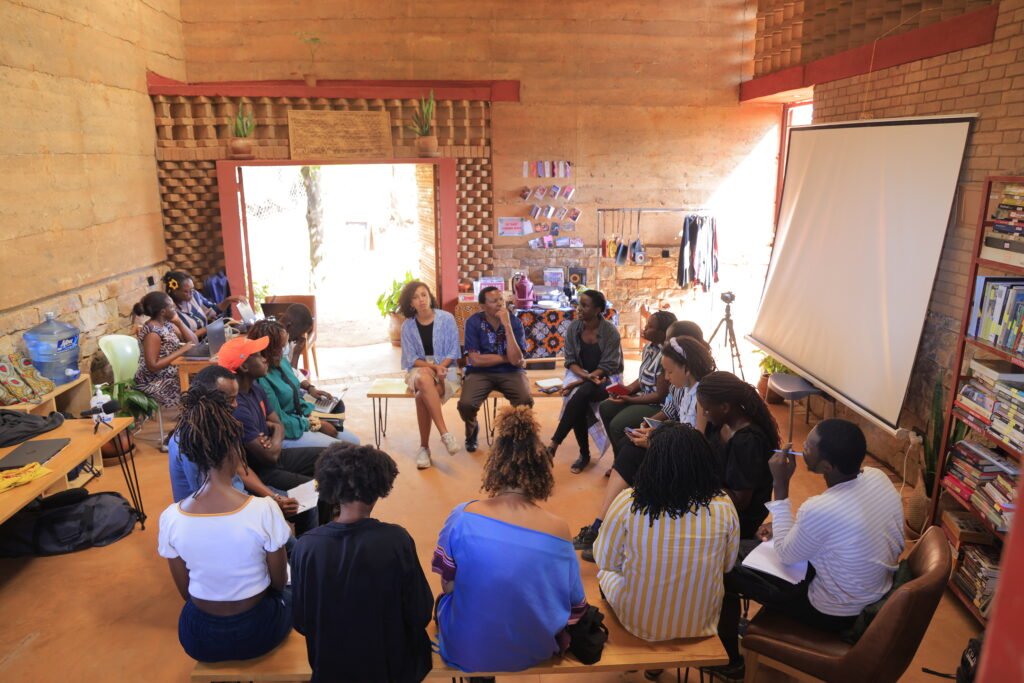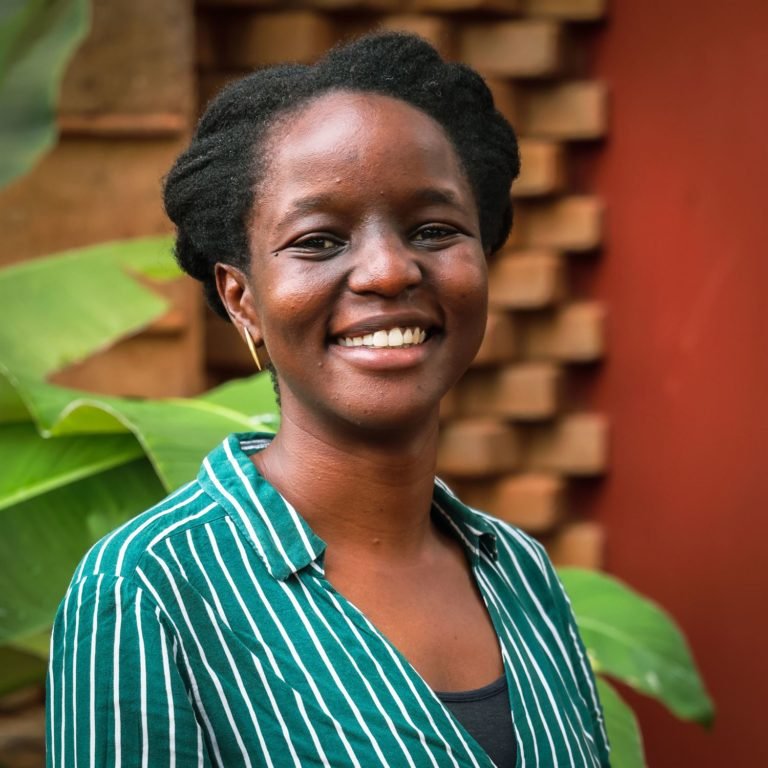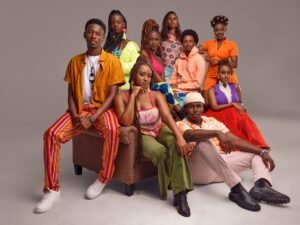There is a peculiar mental block within Africa when it comes to appreciating the arts. Even when the continent’s creative industries generate billions of dollars annually and have created thousands of jobs, most artists and cultural practitioners still struggle to find regular investment and cultural buy-in for their work. In the face of humanitarian issues like food insecurity, education, and healthcare access, arts funding is often a last priority for governments and civil society alike. Arts are often regarded as a frivolous recreation rather than a tool for social analysis and transformation. This is certainly the case in Uganda, where President Yoweri Museveni is on record as saying that arts classes are useless.
When artists actually manage to secure funding for their work, it almost always comes with stipulations that serve the interests of the funder. These are typically either government bodies promoting themselves through commemorative statuary, corporations selling products, or European funding bodies with archaic understandings of what development should look like. In these ways, the room for artists to truly get their ideas across is highly restricted. In the midst of all this, 32° East has stood for 14 years as a bastion of creative exploration, community-building, and grassroots support for visual artists in Uganda. It is a non-profit organisation that strives to nurture Uganda’s visual arts scene and foster greater cultural appreciation for contemporary art among the public.
With the prevailing apathy Ugandan society has towards the arts, coupled with limited local arts infrastructure, local artists often experience isolation and a lack of opportunities. As such, local community building and global network building are key tenets of 32 East’s approach. Leveraging their connections with international networks like Arts Collaboratory and the Prince Claus Fund, they facilitate opportunities for Ugandan artists to connect and learn from peers across borders and contexts. Artists can become members for an annual fee of just 100,000 UGX (~$27), granting them access to a co-working space, exhibition space for their work and merchandise, daily subsidized meals, a library, an industrial printer, and a range of other resources and opportunities. They host zine clubs and teach-ins and generally create space for left-of-centre perspectives that are so often suffocated in Ugandan society.



Nestled in a quiet corner of the otherwise bustling Kabalagala neighbourhood, 32° East serves as a vital hub for under-resourced emerging artists, offering them space to develop their practice and inviting the wider community to explore contemporary art and its role in shaping society. Their physical space is the first purpose-built arts centre in the country, constructed over four years using locally sourced materials with the input of local artists. It comprises four artist studios, a contemporary art library, and communal working spaces. A second phase of the space is currently under construction which will include an exhibition gallery, art supply store and more studios.
Their flagship program is a 3-month residency that equips artists with a designated studio space, living allowance, a modest materials budget, and access to 32° ‘s community and library of contemporary African art. Unlike most residency programmes that require specific outputs or methodologies of their sponsored artists, this one privileges experimentation above all. There is no pressure to produce any finished work, so long as the artist makes the most of their time, expanding the bounds of their creative practice and meaningfully exchanging with the local community. It is a bold approach, generally, but especially in Uganda, where artists are under constant public scrutiny, often expected to validate the worth of their work.
32° East is also the organisation behind KLA Arts, Kampala’s longest-running contemporary arts festival. Launched in 2012, the festival strives to increase public awareness of and accessibility to Kampala’s contemporary art scene through a series of weeks-long exhibitions that are erected in various public spaces throughout the city. “Art shouldn’t be this exclusive thing,” 32° East director Teesa Bahana told Rolling Stone Africa. Because “there isn’t a lot of art’s infrastructure, people don’t get to see arts and culture very much. Public space is also highly politicised and securitised, so it’s also a way of having us, as people who live in Kampala, think about public space differently and see how art can help us think and talk through things that we don’t always have the time, space, and freedom to do.” The first edition saw 12 shipping containers placed throughout the city and had 12 artists transform each one into an exhibition of their own design. Last year’s festival featured a series of exhibitions and workshops led by 29 artists from across Africa’s diaspora, each exploring the meaning of “care” through their own unique cultural and artistic perspectives. Since 2011, the space has hosted more than 100 artists-in-residence, provided emergency relief during the Covid-19 crisis, and organised four editions of KLA ART.
Director Teesa Bahana caught up with Rolling Stone Africa in an exclusive interview contextualising Uganda’s art world and the significance of 32° East’s work in the space.

Can you speak to the criteria for being selected for your residency program?
The residency is about experimentation, research, and about getting deeper into something new. We look for people who have that desire to try something that’s outside of the norm for them. An openness, a curiosity, a flexibility. Someone who is also interested in being in community. That’s such an important part of our work.
Your residency stands out for its emphasis on process and experimentation over a finished product. Are there any trends you’ve noticed in terms of how artists choose to use their time in your residencies?
Something that is quite similar is how people interact with each other. Artists usually come in at the same time, then spend three months together and really lean on each other a lot in terms of asking questions of each other and providing critique. Sometimes you see certain threads between their work. You see them being inspired by each other. There was an artist who started using more collage techniques in his work because of watching another artist in-studio at the time, even though they were working in very different mediums.
Tell me a bit more about the vision for KLA Art.
KLA ARTS happens every two to four years and it’s all about getting art out into the city’s public spaces. Art shouldn’t be this exclusive thing, but [because] there isn’t a lot of arts infrastructure, people don’t get to see arts and culture very much. Public space is also very highly politicised and securitised, so it’s also a way of having us, as people who live in Kampala, think about public space differently and see how art can help us think through and talk through things that we don’t always have the time, space, and freedom to do. With the artists, we try to focus on artist development too. It’s also about how this opportunity can stretch an artist and make them grow in their practice, in their materials, in their collaborators, in where they work, and in where their work is shown.
In your view, what do you think needs to happen in order to see a greater shift?
With the festival, it’d be so nice if we had more funding and more ease with putting it on because there’s always difficulty securing permissions to work in the city. It would be amazing if instead it was in partnership with the city. That would be so transformative. For them to be able to say, ‘Here are all these spaces that you can use and have access to for free, and here is funding for the artists to be able to make this kind of work, and here are all these communities that you can reach out to that will definitely come to your thing.
You are in the midst of expanding your art centre & HQ. How does this second phase fit into the long-term vision for 32 East?
It’s about trying to create supportive infrastructure that is responding to the needs of artists. So many of our artists have talked about struggles with having more spaces to exhibit work, [especially] ones that aren’t focused on sales, so artists can show more experimental work. So there will be an exhibition space and an art supply shop, and artists will be able to purchase quality supplies consistently. We’ll have two more studios, two of which will be for rent for more established artists. Those are things that bring in a little bit of income as well so that we can pay our electricity bills, cover a staff member’s salary and just give us more independence.
With funders, you’re always at their mercy to a certain extent. Often they have their own agendas that you then have to fit in with. If we have revenue that we’re able to generate with the space, then we’re able to continue to be artist-centered rather than needing to be donor-centered.
How can people contribute?
I love that question! We have a donation link on our website. We are also currently hosting a crowdfunding campaign until the end of May.
What sets Kampala and East Africa’s art scene apart from others? What can the world stand to learn from us?
How the scene developed, we haven’t been too affected by the international art market. So it allows for a lot of artists to refer to themselves rather than constantly looking to the outside world to tell us who we need to be or the kind of art we should be making. We weren’t having large-scale international art events, with collectors coming through all the time. We’ve been kind of protected from some of the influences that can be a bit corrosive to someone’s practice and to their development. Probably not all artists would agree because they’d be like, “I want to make money from sales.” But from a structural perspective, you can definitely feel that.
In your view, what does Uganda’s art scene most urgently need?
Money. That’s it. We will always figure out what to make of it. So just give us money to do it and then enjoy the benefits. There are all these positive externalities of funding the arts. It brings people together, encourages critical thinking, helps you imagine differently, helps you critique things, and helps you work out who you are as a person. All of these are things that we have acknowledged are problems within the world that can be countered if you just resourced artists, got out of their way and didn’t [pressure] them to justify themselves and what they do.







